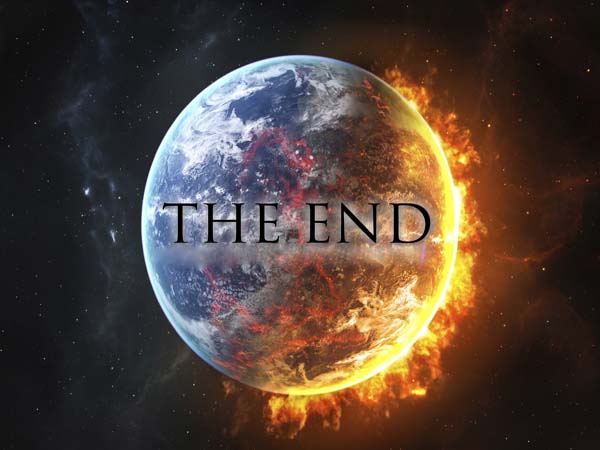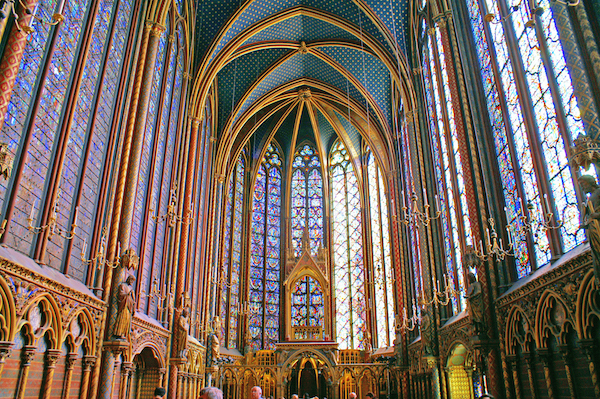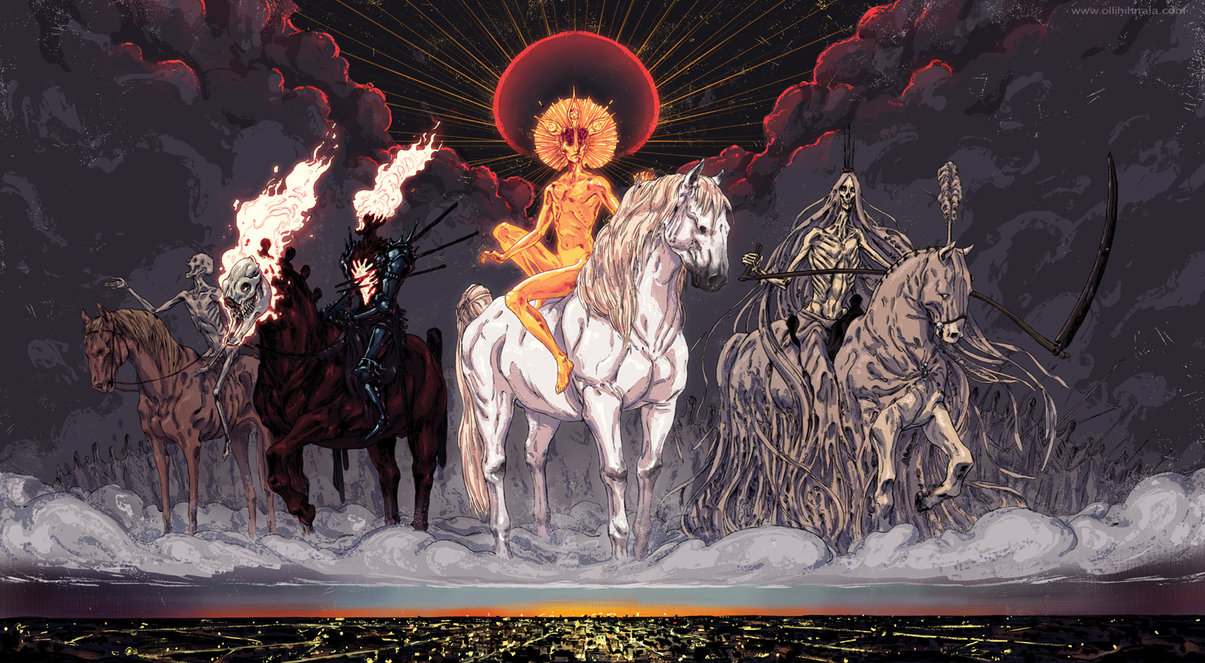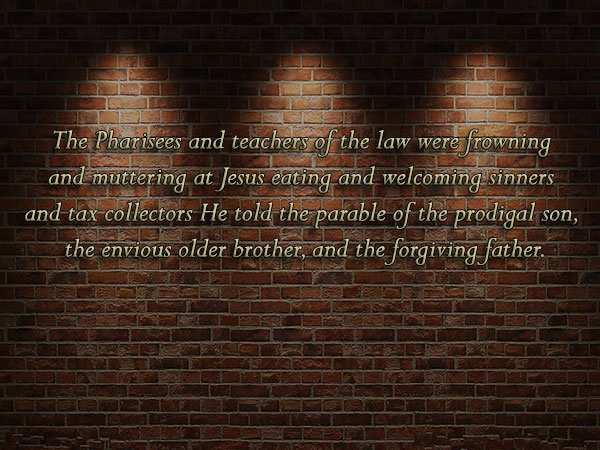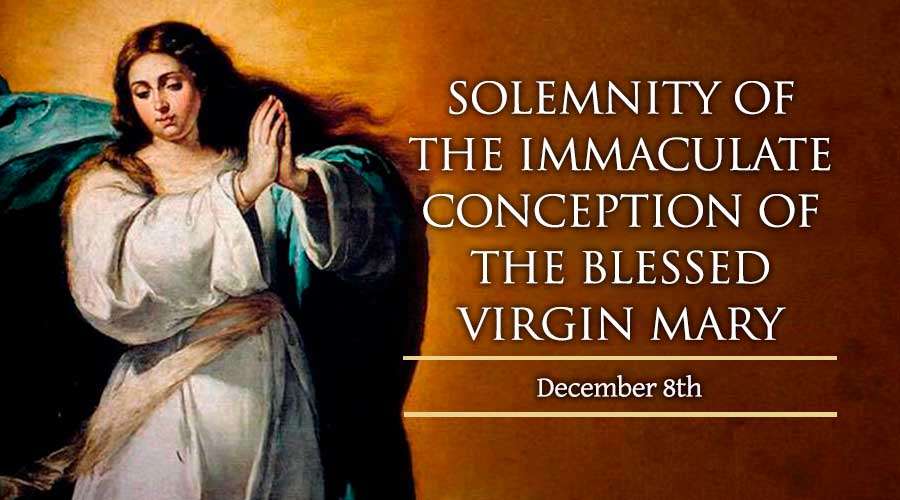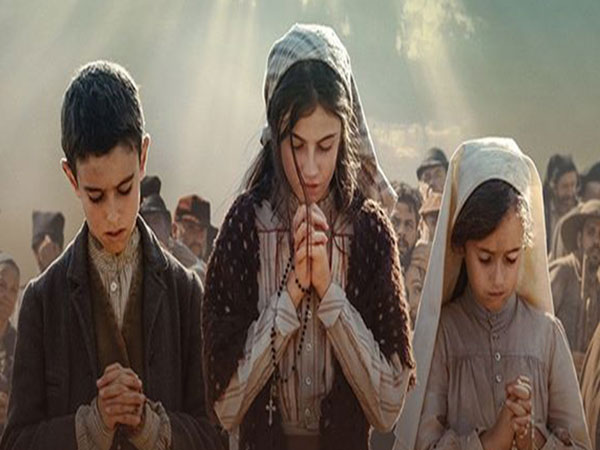Hopes of terror
The prophecies that the book of Apocalypse (or Revelation) concerning the end of times are staggering. Bloody persecutions against the Christians; a ferocious Beast with seven heads and ten horns that will attack the believers; an invasion of gigantic locusts with the tale of scorpion and teeth of a lion; blood and fire that will fall to the earth so as to kill a third of humanity; an enormous dragon that will look for those faithful to Christ so that it may devour them; and as if this is not enough there will also be earthquakes, darkness of the sun, falling stars, pests, wars, famine, death and stacks of violence.
With such a panorama it is just logical that Christians would like to know when these calamities would happen. That is why; there have been many attempts along the course of history to know the exact dates of these events. But all these attempts failed.
Nevertheless, once in a while an enlightened one or a founder of a sect or a visionary appears telling people that we are now living in the end times. Is it really so? Can we know when the announcements of Revelation will happen? It seems that we can.
The author of the book
Before anything else, let us consider the writer of Revelation. The author said that he is called John (1:9). Who is this John? For a long time it was thought that this was the same person as that of John, one of the Apostles, the son of Zebedee and brother of James. But the author never says in any part of the book that he is the apostle. Instead, he presents himself as a prophet (22:9)
It was also thought that this John is the same as the writer of the Fourth Gospel. But then, it is enough to read these two books and compare them to realize that the literary style, the words and the ideas of these two are very different.
That is why; the “John” of Revelation is neither any of the Twelve Apostles nor the author of the Fourth Gospel. Rather he is somebody from the primitive church, inspired by God, composed this opus. According to the author himself, he was a prisoner in an island in the Aegean Sea called Patmos (1:9) around the year 95.
For when are all these?
Revelation composed by John consists of a series of visions that are apparently chaotic. But if we read it attentively we can clearly bring out some things.
In its beginning the book states: The revelation of Jesus Christ, which God gave him to show to his servants what must soon take place (1:1). The first verse, then, already makes reference to the things that will happen “very soon.”
Immediately it writes: “Happy is the one who reads these prophetic words, and happy those who hear them and treasure everything written here, for the time is near” (1:3). That is to say, it reiterates that what the book announces will happen very soon.
Then the author tells about all the visions that he had and at the end of the books it says: “These words are sure and true; the Lord God who inspires the prophets has sent his angel to show his servants what must happen soon” (22:6). And a further down it states that an angel told him: “Do not keep secret the prophetic words of this book because the time is near” (22:10).
It is obvious then that what the book was prophesying were events that were very close to the time of the author and the first readers of the book.
“I am coming soon.”
Yet Revelation not only affirms in an explicit way that the time of its fulfillment was near. It also confirms this with images and visions.
In this way, it tells the Christians that their sufferings will not be for long (6:11); that they must rejoice for the judgment of God is near at hand (14:7) l that the Dragon has just little available time for what it is doing on earth (12:12); that when the seven trumpets sound the end will come (10:6-7). Everything, then, seems to predict something that is very imminent.
That is the reason why along the course of the book one can read this phase from Jesus: “I am coming soon. Surely I am coming soon.
If the events in Revelation will still take a long time, many centuries to happen, why did Jesus hope for it uselessly? Of what use is his counsel that the Christians pray with longing “Come Lord Jesus” (22:17, 20) if Jesus did not think of coming soon to fulfill the prophecies?
The book assured its first century readers that these things would soon come to pass. And what about us? Well, we must believe the writer and abandon the idea of encountering in the book events that belong to our own time.
To what events, then, does Revelation refer? We already said that the book was written around the year 95. During this time, Emperor Domitian governed Rome. The Christians were going through two serious problems: a) the rupture of relationship with the Jews; and b) the persecution unleashed by the Roman Empire.
From Judaism to Christianity
There was a time when the first Christians, just after they appeared, had to confront the Jews. Because even if they were all reading the same Scriptures, praying the same psalms, and were attending in the same Temple, they believed in the resurrection of Jesus which was not accepted by the Jews.
Tensions and troubles began between them. The Jewish authority slowly started to consider the Christians as a sect and prohibited them to enter the Temple and the synagogues.
This placed the Christians in a grave dilemma: they cannot nor would not like to deny the Jewish traditions but how can they just be silent about the resurrection of Jesus and the gospel? They knew that God chose the Jewish people and they would like to respect God’s choice, but what must they do if the Jews would not accept them?
The first part of Revelation, i.e., chapter 4-11 (chapter 1-3 are just part of the introduction), would like to respond particularly to this question.
And what is the response of John? He announces to the Christians that the Church has replaced the people of Israel that the time of the new Israel has come. But not because God has rejected the old Israel but that the true Israelites (i.e., the Jews who accepted Jesus) had been converted now into the Church which was just emerging.
John also prophesizes that there will be a painful rupture between the two communities. It will be total and definitive. But he also warns them that they must not be disturbed because the church signifies the birth of the new people of God, the Christian people.
The passage to new hands
The author recounts all these through visions and symbols in which he shows that the new Church of Jesus has replaced the Old Testament. In this way, the vision of the throne of God (Rev 4) shows that whereas before, Yahweh alone is worshipped, this time Jesus as well is worshipped in the form of the Lamb that was slain. The vision of the sealed book (Rev 5) illustrates that the Old Testament of the Jews is a book that is undecipherable if it is not completed with the gospel that Jesus preached. The vision of the four horsemen (Rev 6) announces the coming of Christ and the inauguration of a new era. The vision of the 144,000 sealed peoples (Rev 7) indicates that the tribes of Israel are not the only ones chosen by God but also an immense crowd of peoples of all races, tongues and nations. The vision of the seven trumpets (Rev 8-9) points out that the prayers of the Christians is that which brings forth the divine justice over the earth. The vision of the little scroll that was consumed (Rev 10) exhorts the readers to go out and preach the gospel. And the vision of the two witnesses (Rev 11) proves how the Temple of Jerusalem, that which they could not enter, has now been substituted for by another temple open for the whole world.
The madness of the empire
But a second problem also preoccupied the Christians of the second half of the First Century AD: the persecution unleashed by the Roman Empire against them.
It is still fresh in their memory the very sad yet celebrated madness of Caligula (37-41 AD) and most of all that of Nero (54-68) who a few years early had persecuted cruelly the Christians in Rome and have cause the death of the apostles Paul, Peter and many others.
In the moment of John’s writing, the imperial delirium has been re-installed. Domitian decided to impose the cult of the emperor and demands that he be called “lord and god.” The reactions of the Christians are immediate. Their only God and Lord is Jesus Christ. How can they admit the same claim of Domitian?
When Domitian saw the rejection of the Christians, he unleashed a new and ferocious persecution that will drown in blood the believing communities.
A Beast with seven heads
In the face of this second problem John composed the second part of his book (Rev 12-20). In it he would like the Christians to find encouragement and hope and cheer them in the midst of this very hard testing that they were going through.
They asked how long this horror would last, when God will come in their favor and end the totalitarian claims of the Roman government. The author answered them with images and visions.
In Revelation 12 a woman (representing the church) appears and a big Dragon (the Roman Empire) that would like to devour her children (the Christians). In this fashion the author notifies the readers that God already knows about the persecution let loose against the faithful.
The vision of the two beasts continues (Rev 13). The first represents, once more, the Roman Empire. It has seven heads (as the Seven Hills of Rome) and offensive titles (the divine titles of the emperor. The second Beast is the one in-charge to do all the propaganda so that everyone will worship the emperor. It represents the mechanisms mounted by the emperor to seduce and convince the Christians to venerate him as god, something that they have been achieving in many communities.
With the end of encouraging the Christians, John announces here (Rev 16) a tremendous chastisement against Rome, describing this as seven cups full of calamities spilled over the city.
Rome and its thousand disguises
In Revelation 7 the city of Rome once more appears. This time it figures as a grand Prostitute. As a continuation, it describes its destruction and how those who loved her, sinned with her and negotiated with this prostitute now shout and lament over her (Rev 18). The chastisement of Rome concludes with joyful songs in the heavens where one can hear the triumphal alleluia (Rev 19).
One ultimate vision presents a Horseman mounted on a white horse that struggles with the Beasts and its allies and conquers it. This Horseman is Christ who throws the Beast in a lake of fire.
All of Revelation’s second part, then, consists in the hopeful announcement of the rapid end of the persecution of Christians. With the proper language of apocalyptic literature, the author repeats always the same things through the diverse images, symbols and figures that were used: God reserves a great chastisement against the city of Rome, against the emperor who believes himself to be god, and against its authorities and magistrates. Meanwhile those Christians who remain faithful to the end will be freed from all evils.
This was a prophesy full of consolation for everyone who must persevere in the midst of so much violence and sufferings.
Is there still something more for the end?
After the end of persecutions, Revelation announces the arrival of the reign of a thousand years duration (Rev 20). With this, the author would like to express that Christianity will go on existing for a long time, expressed symbolically as a thousand years even if the author does not pretend to determine it precisely. The imprisonment of the Serpent shows that the power of Satan, i.e. evil, will from here on be limited in his power for the gospel of Christ is now present in the world.
The book ends with the majestic vision of the new heavens and the new earth, and a new city of Jerusalem that comes down from heaven. When will this new heaven and new earth appear?
In reality, for Revelation these, too, have already appeared. At the end of the persecution, the author announces that a new era for all humanity is being inaugurated (to say heaven and earth means all humanity), with a new city of Jerusalem replacing the first one. All the saints of the earths, i.e. those who try to live following the Word will form part of this New Jerusalem.
A Church with a future
Within the limited time that Christianity has appeared, it was already at the point of being aborted. Two great obstacles (the rupture away from the Jews and the Roman persecution) appeared on the cross road that almost asphyxiated it when it was just a nascent church. It was logical, then, for those who adhered to this new movement if there was a future to look forward to, if it was worth the while to offer one’s life for the gospel or was this movement also destined to disappear just like the many other religions back then that appeared and later on disappeared along the course of history.
Facing this hot issue, wherein the believers were risking nothing less than their very lives, John wrote his Revelation to tell all these people that Christianity, which only recently came out, is not just one of those usual religions. Rather this one was meant to last forever. Judaism cannot impede its growth or even the Roman Empire will never get to eliminate it. The Christians could, with confidence. trust in the new Church because the Church had God’s protection always.
Revelation, therefore, does not speak about the end of the world as some would like to believe. For what shall the details of the end of the world (which is supposed to happen thousands of years much later) serve those desperate Christians, persecuted by the Romans? Why would John foretell them with something that will only come centuries later when they do not know if tomorrow they will die?
The hopes of victory
John, who was a Christian preoccupied by the present situation of his brothers and sisters, wanted to tell a joyful and hopeful news for all of them: that Christianity will come out victoriously in front of the Jewish oppression and the Roman persecution, the two great dramas of that moment that they were facing.
All of the prophecies of Revelation, then, were already fulfilled. (Just as the prophecies of Isaiah, Jeremiah or Jesus have already come to pass concerning the destruction of Jerusalem).
Notwithstanding all this, the book continues to have a message for its modern readers. This is so for Christianity today is also beset by diverse persecutions and many have been tempted to ask: Is there a future for this faith? Do we not have to admit that evil, violence, fraud, corruption, lie, are winning and that we must now take its side before all of us die in search of another ideal? Is there a meaning behind standing up for Christian values in front of a world that seems, like the ferocious Beast, to devour those who practice all these values?
Revelation responds positively to all these. In the same way that it came out victoriously from all its potential enemies in its beginnings, the Christian faith is destined to triumph also now. The good and justice that Christianity preaches will never be eliminated. And those who are on the side of evil, these are those who will not have a future.
That was why John, in his book, left written the biggest hopes and dreams ever told!


